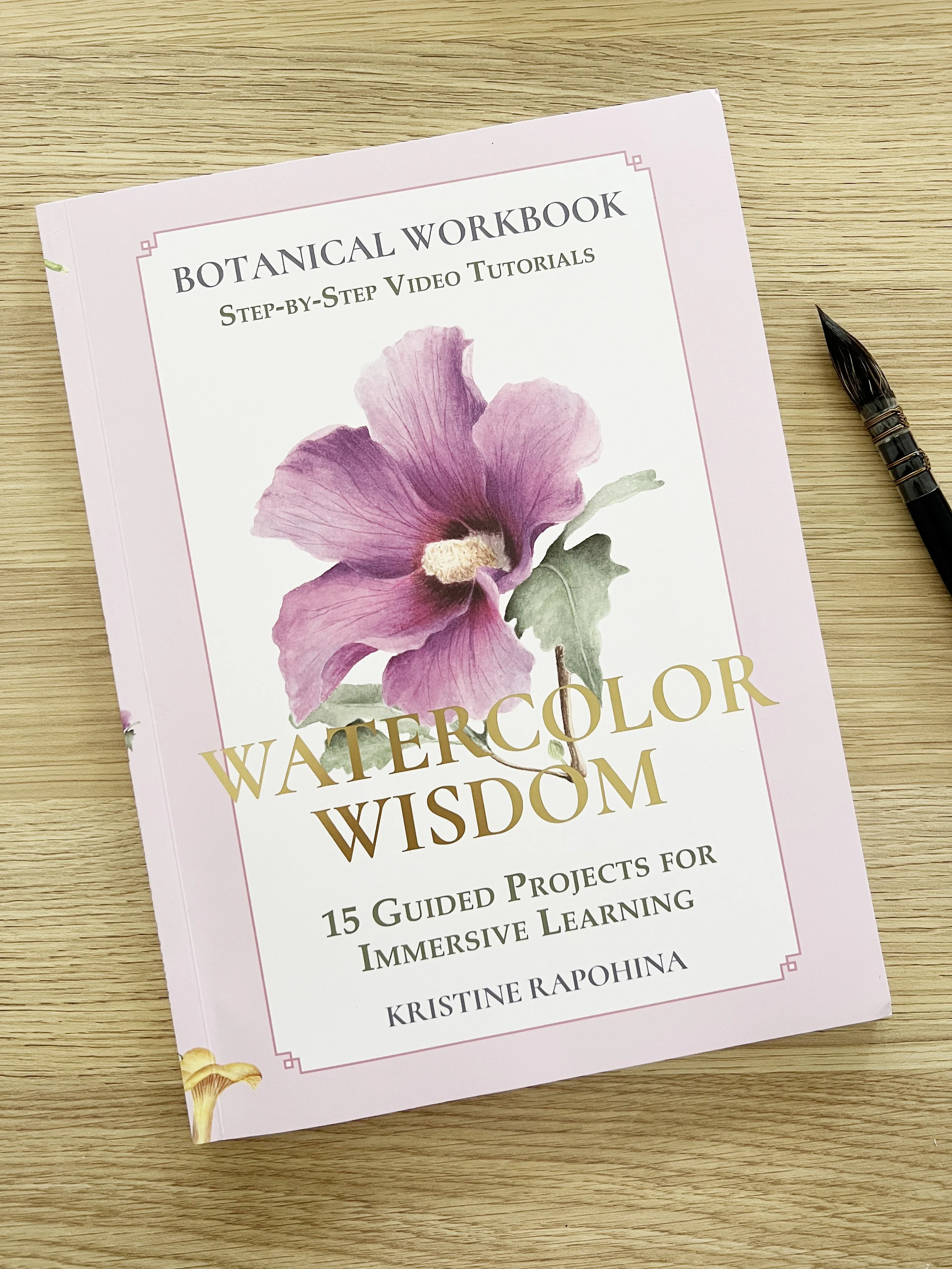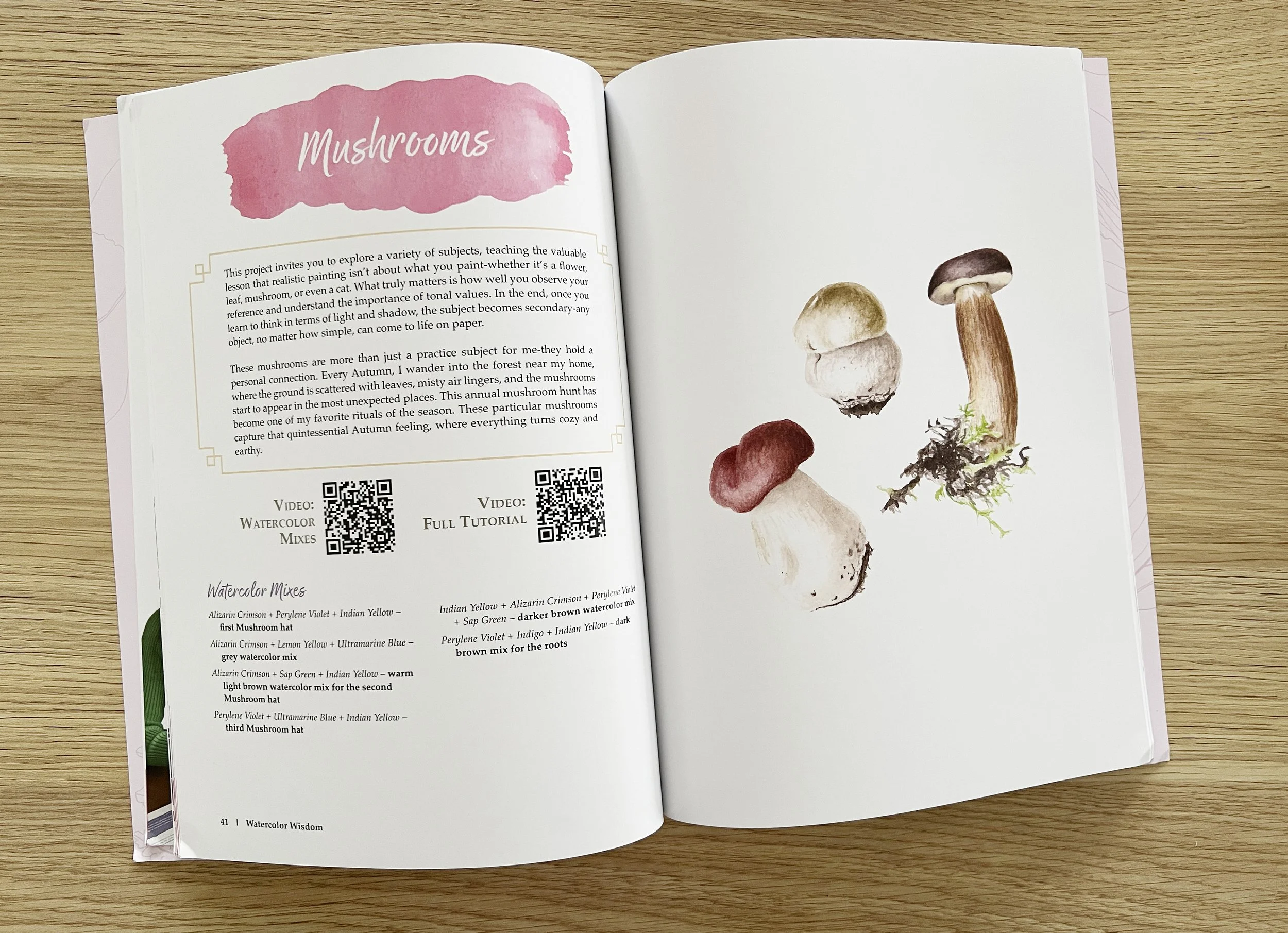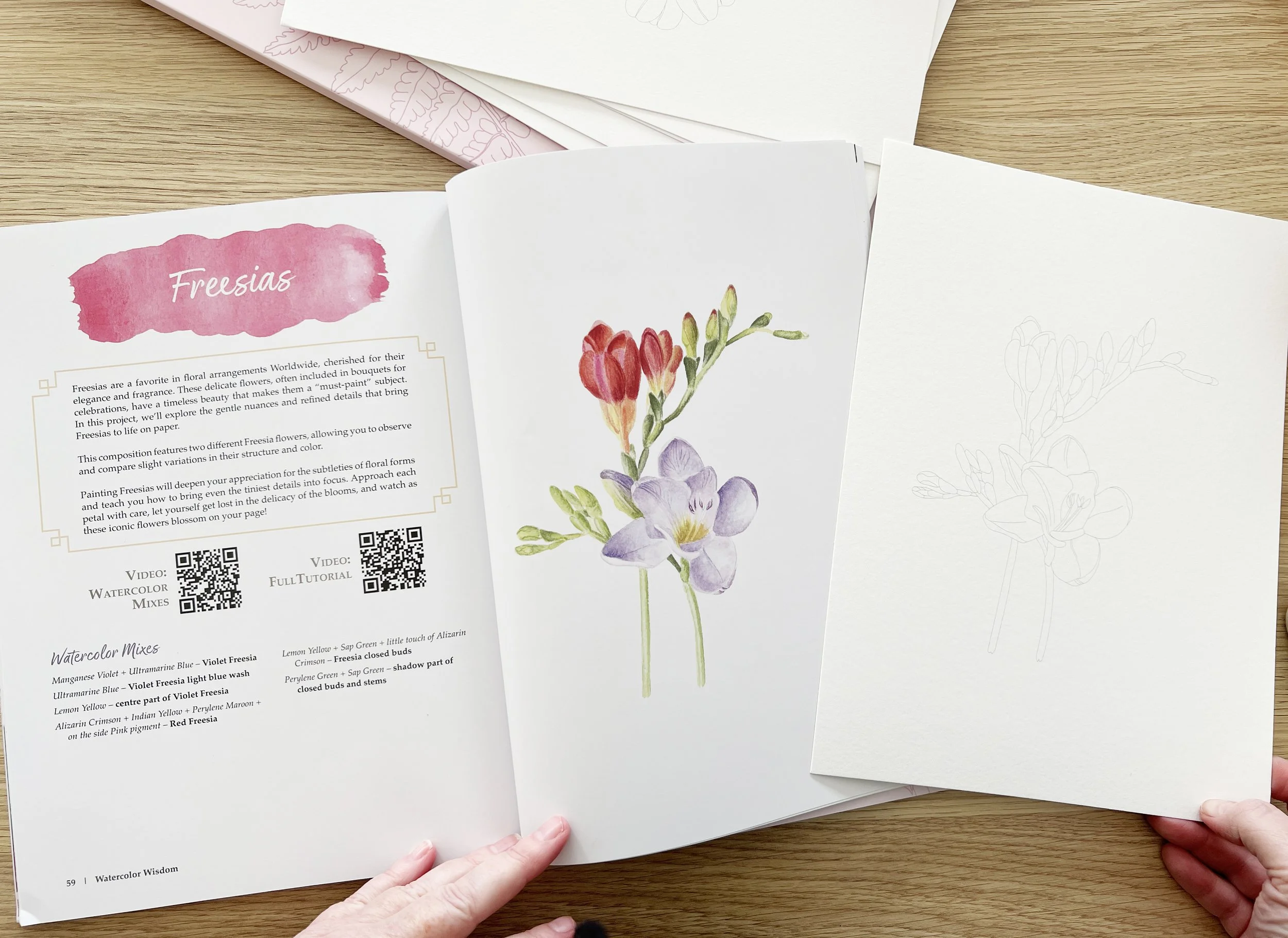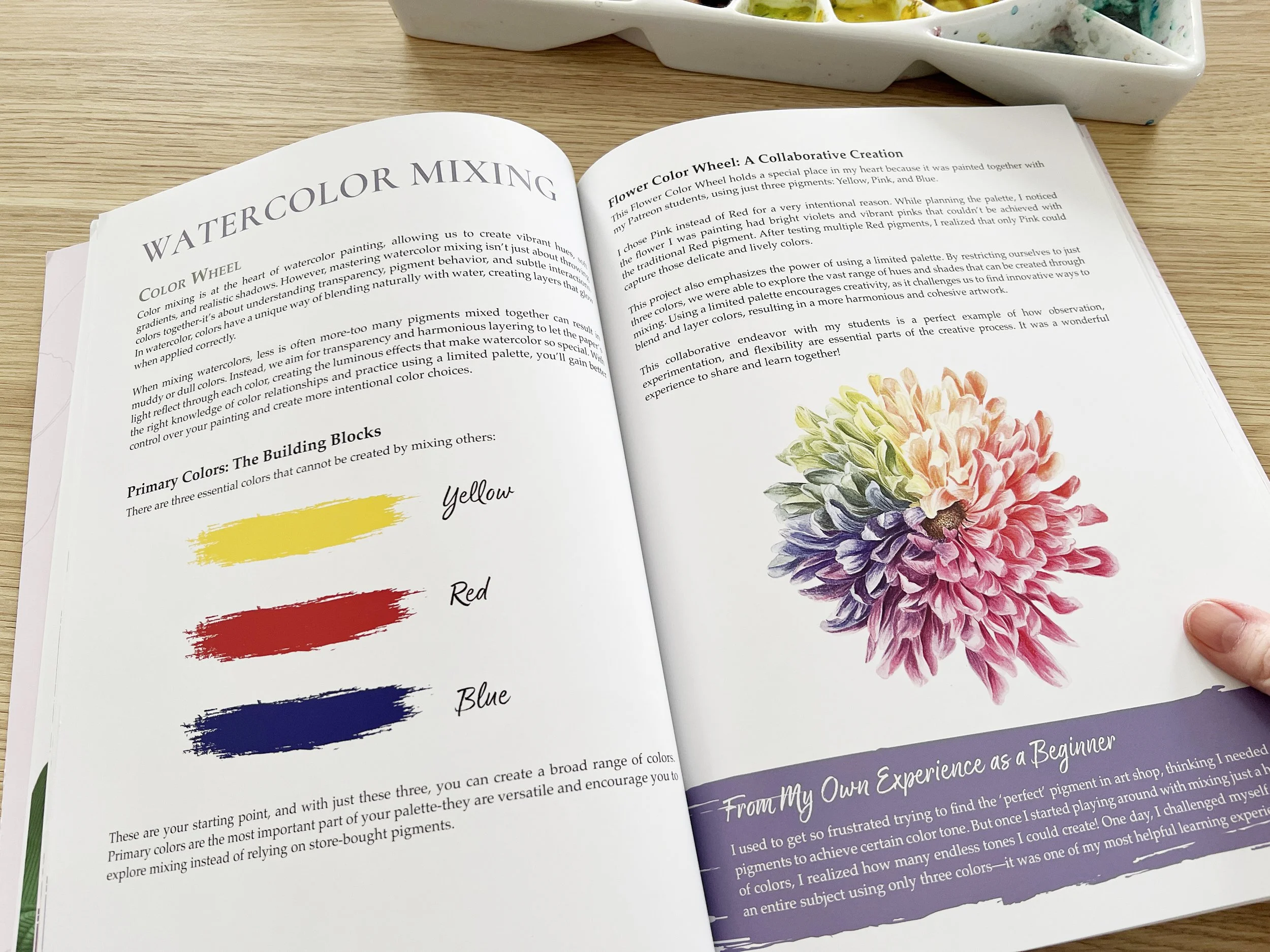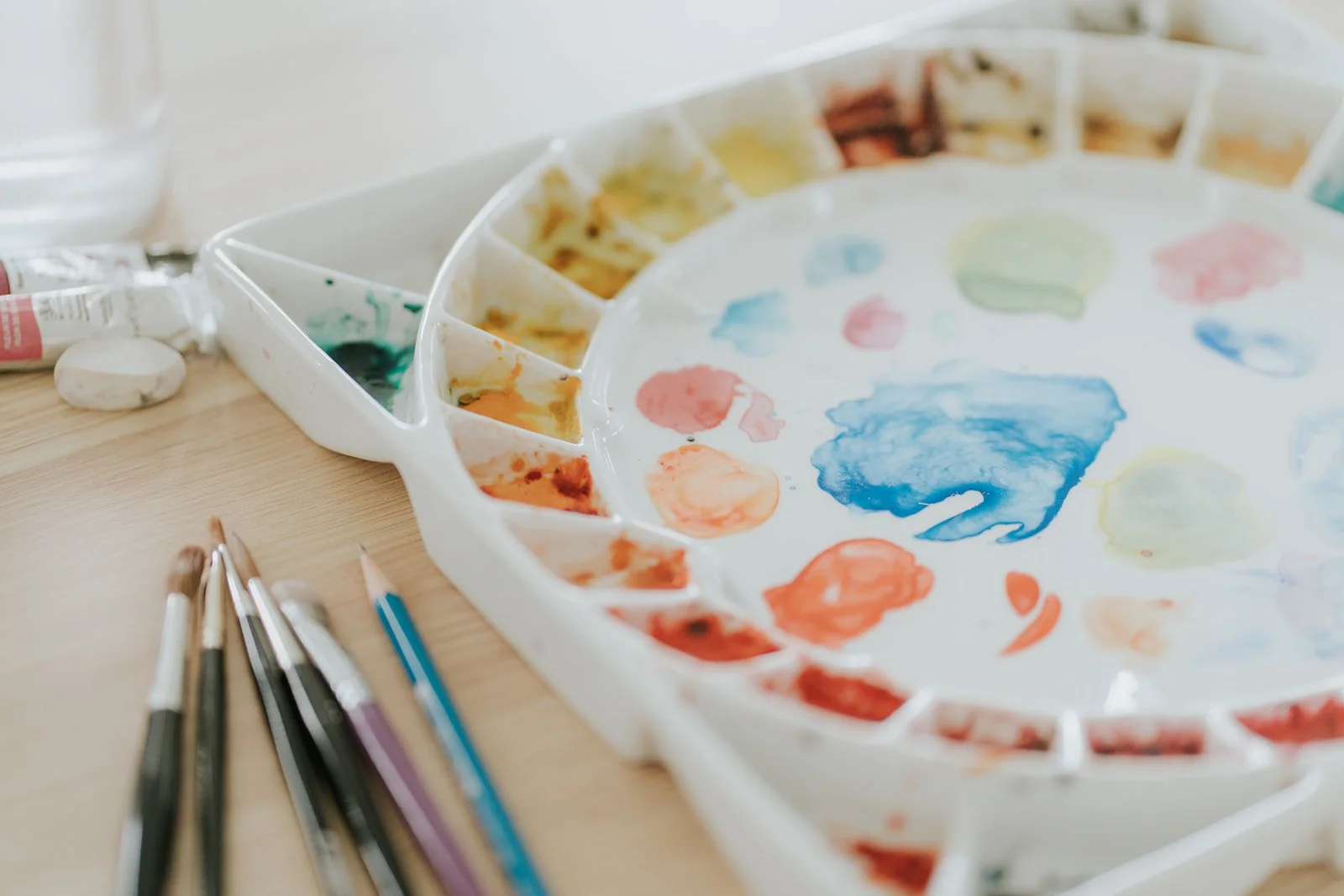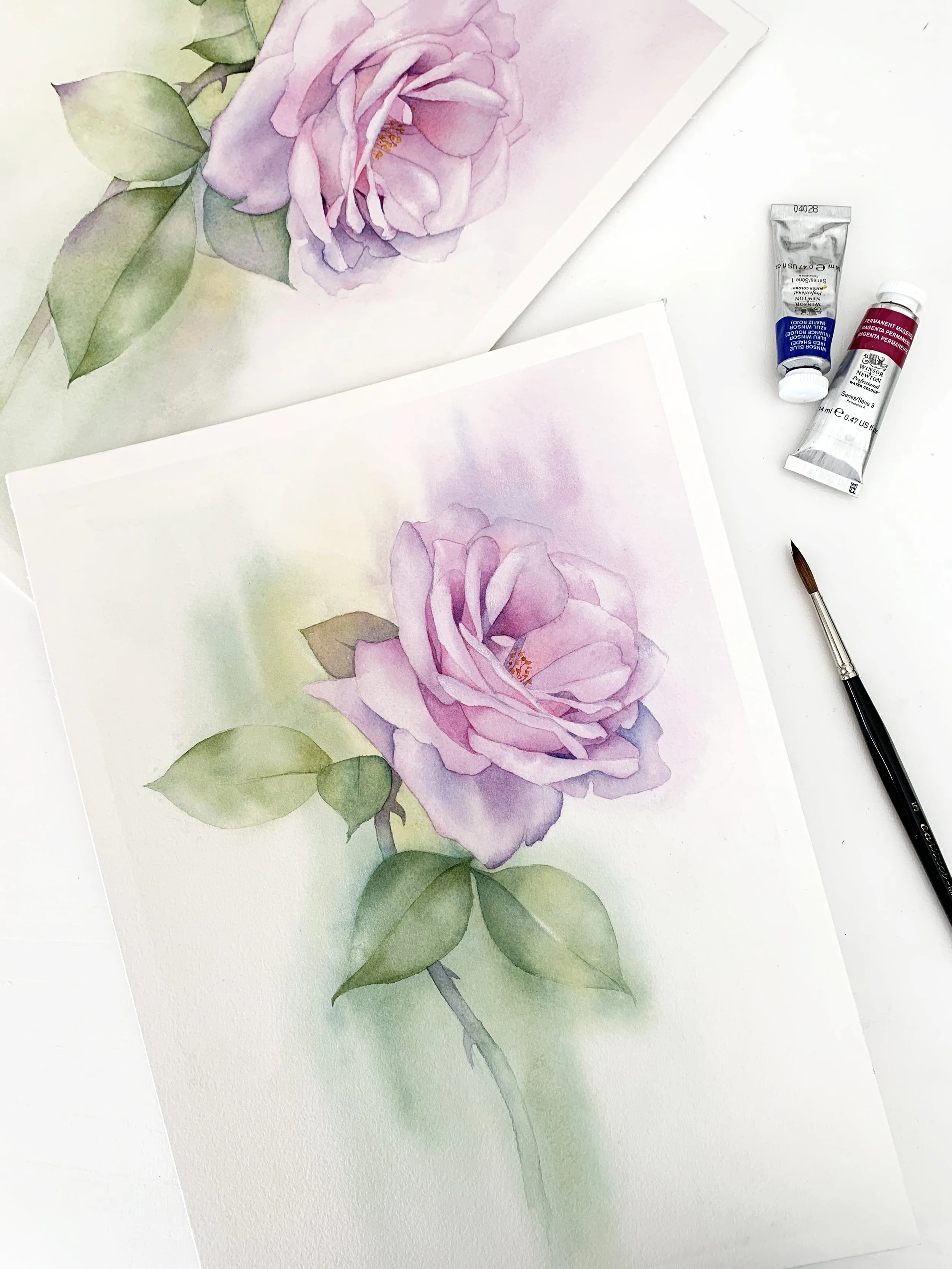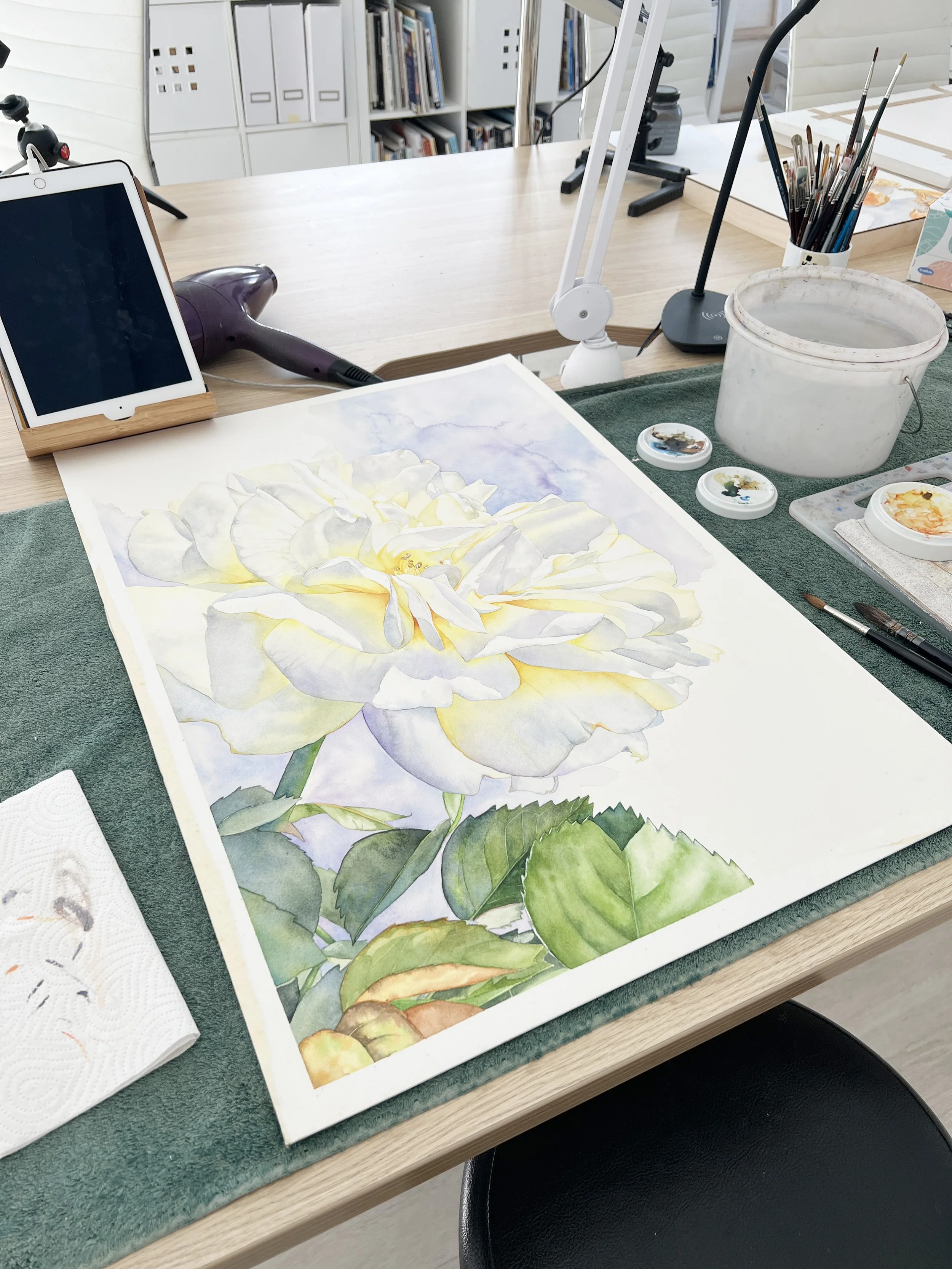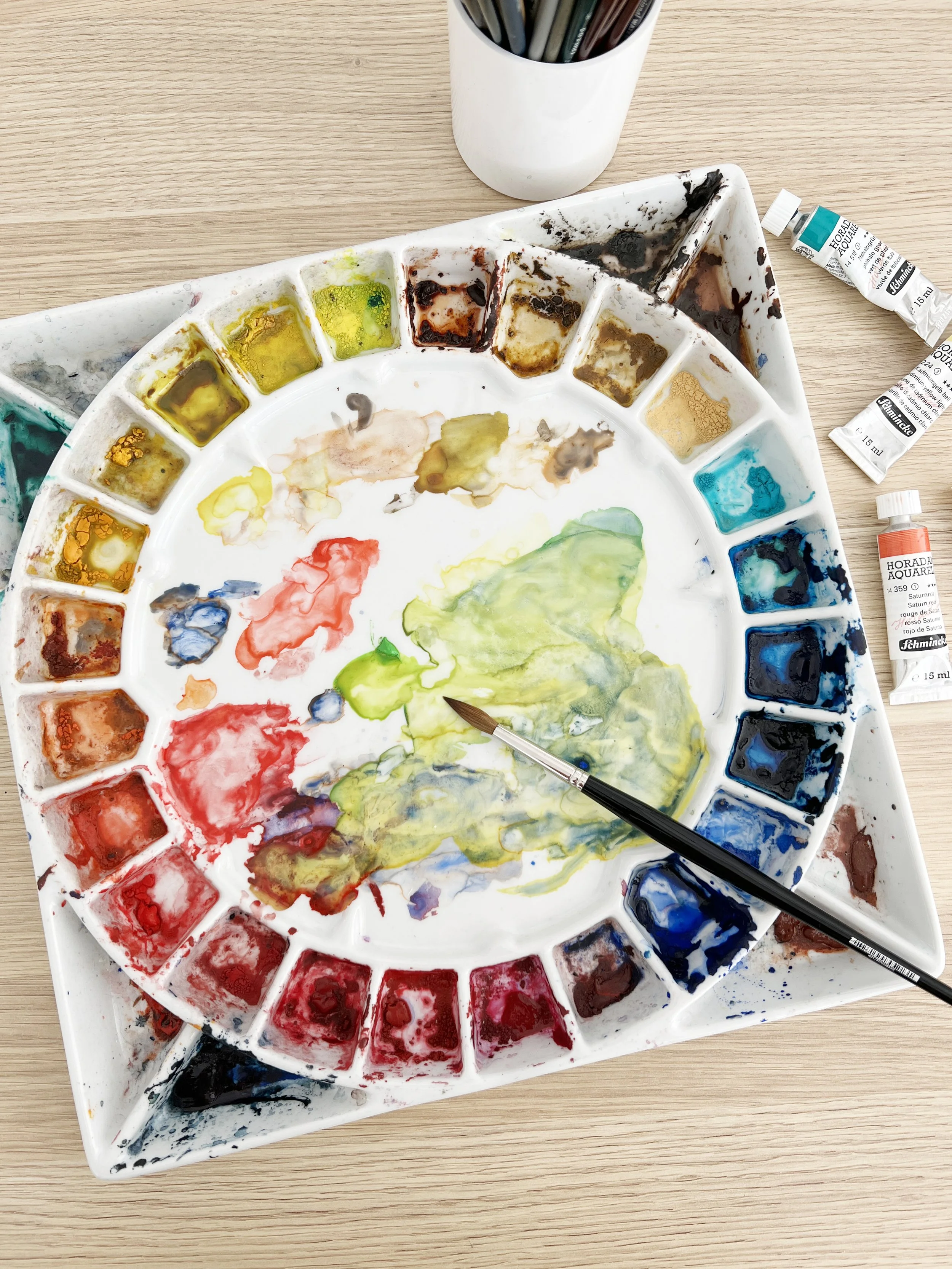'Watercolor Wisdom': A Beautiful Addition to Your Botanical Art Books Collection
A beautiful book for botanical artists.
A few weeks ago, I was sent a copy of Watercolor Wisdom: 15 Guided Projects for Immersive Learning by the author, Kristine Rapohina. I don’t usually read a lot of botanical illustration books, but I was curious to see how this one approached teaching watercolour.
It’s a well-organised book with a hands-on approach to learning. Each project includes a QR code linking to a video tutorial, allowing you to follow along visually. There are no step-by-step written instructions, which may not suit everyone, but the format encourages you to learn by doing - through painting, watching, and repetition.
What’s Inside the Book
Watercolor Wisdom is built around 15 botanical projects, each designed to help you explore a specific concept or technique. For each one, you’re given a printed line drawing on hot press watercolour paper so you can paint directly onto the page. There are no written step-by-step instructions - instead, each project includes two QR codes: one links to a full video tutorial of the painting process, and the other shows the colour mixing for that piece.
The book includes a botanical drawing of each project printed onto watercolour paper.
It’s a video-led approach that encourages you to learn by watching and doing, making it feel more like a guided class than a traditional how-to book.
The first 21 pages of Watercolor Wisdom cover a range of foundational topics before you dive into the projects. Kristine runs through essential materials, tonal values, and basic techniques like layering, reserving whites, and smoothing paint. You’ll also find a graphite apple drawing exercise and a few warm-up activities, like practising brush strokes - all supported by linked videos you can watch via QR codes. There’s even a quick guide to mixing with watercolour and what to do when things don’t go to plan. It’s a solid introduction that eases you into the hands-on nature of the book.
Continue to enhance your knowledge of colour theory.
Who This Book Is For
If you love painting flowers and want a solid learning experience, this book ticks a lot of boxes. It’s great for beginners but won’t bore someone who’s already comfortable with a brush. The instructions are clear and encouraging, and Kristine's approach is friendly - like having a calm teacher beside you instead of a rigid manual.
This would suit:
Anyone learning at home without formal art classes
People who enjoy following a project from start to finish
Artists looking to improve their layering, detail work, or colour transitions
Botanical lovers keen to deepen their watercolour practice
What Could Make it Even Better
The video-led approach will suit many people, especially those who like to follow along visually. That said, I think the book could be even stronger with the addition of some brief written instructions or project notes and progress photos of the painted projects - just for those who prefer reading through the steps or don’t always have a device handy. I also found myself wishing for a few reference photos in the video tutorials. It can be really helpful to see what the artist is looking at while they paint, especially when learning how to interpret shapes, tones, and colour from life or photo reference.
Final Thoughts + Recommendation
Watercolor Wisdom offers a fresh and accessible way to learn botanical illustration through painting. It’s thoughtfully laid out, with plenty of room for hands-on practice and exploration. While a few extra additions like written steps or reference images would make it even more versatile, the format will suit anyone who enjoys learning by doing. If you're after a guided, project-based approach to painting flowers in watercolour, this is a lovely book to add to your collection.
If you are interested in learning to paint in watercolour, I have hundreds of online, voiced over watercolour tutorials for all skill levels.
